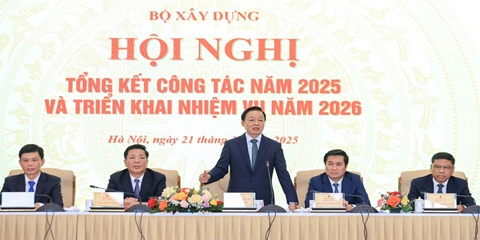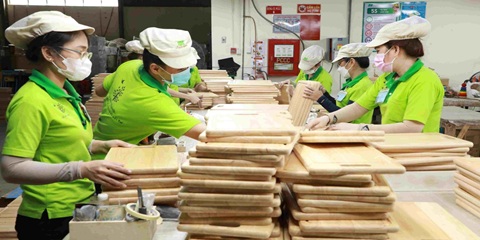Want to be in the loop?
subscribe to
our notification
Business News
TEXTILE-GARMENT EXPORTS LIKELY TO FALL AFTER 25 YEARS
Vietnam’s textile and garment export revenue is forecast to reach US$34 billion this year, down 14%-15% over last year, seeing a reduction after 25 years of continuous growth, due to the impact of Covid-19.
According to the Ministry of Industry and Trade, the country exported textiles and garments worth US$25.6 billion in the January-September period, down 12% over the same period last year, news site Vietnamplus reported.
Vietnam National Textile and Garment Group (Vinatex) Chairman Le Tien Truong said due to the pandemic, many countries have closed their markets, breaking supply chains and resulting in a declining demand for goods.
Although the export turnover of the textile and garment sector this year is predicted to fall after 25 years, the decline in Vietnam will not be as large as in other countries, Truong added.
Over the past few years, textiles and garments industry has remained one of the biggest export earners of the country.
Truong said Vinatex’s subsidiaries have employed multiple solutions to overcome the hard time, such as receiving low value added orders and developing new products serving the fight against the pandemic.
Nguyen Duc Tri, chairman of Hoa Tho Textile and Garment JSC, said that despite being hit by Covid-19, especially the second wave, and the recent storms, the subsidiaries of Vinatex in the central region have operated effectively and ensured jobs for all their nearly 20,000 laborers.
According to Than Duc Viet, general director of Garment 10 JSC, the Government’s amendment of Resolution 20 on licensing the export of medical face masks amid the Covid-19 prevention and control period has helped enterprises reverse the situation.
Instead of a plunge in revenue, Garment 10 JSC has obtained a growth rate of 3%. It has even employed more laborers since May.
The country’s participation in free trade agreements (FTAs), such as the European Union-Vietnam Free Trade Agreement, has benefited the local apparel sector, Viet added.
Deputy Minister of Industry and Trade Cao Quoc Hung asked the sector to pay more attention to the domestic market to ensure a more sustainable growth.
The sector should also enhance the development of local brands, connect supply chains, develop supporting industries, improve governance and boost the digital transformation in corporate management and operation.
In addition, textile and garment firms should make use of FTAs to expand their material production and further participate in supply chains.
At a recent meeting with textile, garment, leather and footwear enterprises, Prime Minister Nguyen Xuan Phuc said these firms are benefiting from FTAs.
However, the apparel and leather-footwear sectors should improve the quality and design of their products to cement their position in local and foreign markets.
Source: The Saigon Times
Related News

A STELLAR CHRISTMAS AT SOFITEL SAIGON PLAZA
Experience the magic of year-end celebrations in five-star luxury, where Parisian elegance meets Saigon’s festive vibrancy. Discover your Stellar Christmas moments: https://sofitel-saigon-plaza.com/festive-offer-2025

CONSTRUCTION SECTOR POSTS OVER 9% GROWTH IN 2025
Industries under the ministry’s management accounted for an estimated 17.23% of national gross domestic product (GDP), up about 0.17 percentage point from 2024. They contributed around 1.96 percentage points to overall GDP growth, reported the Vietnam News Agency. The contribution helped push Vietnam’s economic growth to above 8% in 2025 and supports the Government’s aim of pursuing double-digit growth in the coming years.

VIETNAM PUTS PUBLIC INVESTMENT DISBURSEMENTS AT VND603.6 TRILLION
Vietnam’s public investment disbursements had amounted to VND603.6 trillion in the year to December 18, equivalent to 66.1% of the plan assigned by the prime minister. According to the Ministry of Finance, actual disbursements by December 11 had totaled VND577.7 trillion, or 63.3% of the prime minister-approved plan of VND913.2 trillion, the Vietnam News Agency reported.

SHINE INTO 2026 AT HOIANA RESORT & GOLF!
This New Year’s Eve, celebrate where the sea meets the sky. Vibrant performances, festive dining, DJ beats, live bands and dazzling fireworks come together for one unforgettable night. From beachfront countdown moments to curated New Year’s Eve dinners across Hoiana, every detail is designed to welcome 2026 in style.

VIETNAM’S TRADE SET TO SURPASS US$900 BILLION FOR FIRST TIME
Vietnam’s total import-export turnover is expected to reach about US$920 billion by the end of the year, marking the first time the country’s trade value has exceeded the US$900-billion mark. As of December 15, Vietnam’s total trade turnover stood at US$883.7 billion, according to the Agency of Foreign Trade under the Ministry of Industry and Trade.

GLOBAL SOURCING FAIR VIETNAM 2026 – THE TRULY GLOBAL B2B SOURCING SHOW IN VIETNAM TO EXPAND & DIVERSIFY YOUR EXPORT MARKETS WORLDWIDE
The 4th edition of Global Sourcing Fair Vietnam returns in 2026 with an impressive scale, featuring 700 booths showcasing Fashion & Accessories, Home & Gifts, and the newly introduced Printing & Packaging Products from 500+ verified suppliers across Vietnam and Asia – including Mainland China, Taiwan, Hong Kong SAR, South Korea, India, Bangladesh, ASEAN, and more.
























